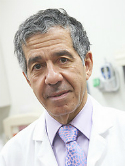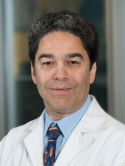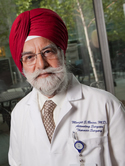Endoscopic placement of direct percutaneous jejunostomy tubes in patients with complications after esophagectomy Journal Article
| Authors: | Bueno, J. T.; Schattner, M. A.; Barrera, R.; Gerdes, H.; Bains, M.; Shike, M. |
| Article Title: | Endoscopic placement of direct percutaneous jejunostomy tubes in patients with complications after esophagectomy |
| Abstract: | Background: Complications after esophagectomy may prevent oral intake, lead to dependence on total parenteral nutrition, and lengthen hospital stay. Direct percutaneous endoscopic placement of a jejunostomy tube allows enteral feeding in the presence of postoperative complications and eliminates the need for total parenteral nutrition. Methods: A total parenteral nutrition database was used to identify patients who received total parenteral nutrition because of complications after esophagectomy. Records of all patients subsequently referred for percutaneous endoscopic jejunostomy placement were reviewed. Results: Twenty-five patients with postesophagectomy complications were referred for percutaneous endoscopic jejunostomy placement. A percutaneous endoscopic jejunostomy was successfully placed in 21 patients (84%), all of whom were weaned off total parenteral nutrition. Six patients (29%) in whom percutaneous endoscopic jejunostomy placement was successful died during hospitalization at a mean of 20 days (range 5-40 days) after the procedure for reasons unrelated to percutaneous endoscopic jejunostomy tube insertion. The remaining 15 patients were discharged while receiving nutrition by means of the percutaneous endoscopic jejunostomy. Ten of them had subsequent removal of the percutaneous endoscopic jejunostomy at a mean of 131 days (range 20-281 days). There were no major percutaneous endoscopic jejunostomy-related complications. Minor complications occurred in 4 patients (19%). Conclusion: Percutaneous endoscopic jejunostomy placement may be considered in patients with complications after esophagectomy. In these patients, percutaneous endoscopic jejunostomy placement avoids the need for total parenteral nutrition. |
| Keywords: | adult; controlled study; treatment outcome; aged; middle aged; antibiotic therapy; retrospective studies; major clinical study; constipation; diarrhea; gastrointestinal hemorrhage; treatment indication; abdominal pain; postoperative complication; feasibility studies; device; endoscopic surgery; esophagus resection; postoperative infection; total parenteral nutrition; intestine perforation; esophagectomy; endoscopy, digestive system; enteral nutrition; jejunostomy; clindamycin; cefazolin; penicillin g; digestive tract intubation; humans; human; male; female; priority journal; article |
| Journal Title: | Gastrointestinal Endoscopy |
| Volume: | 57 |
| Issue: | 4 |
| ISSN: | 0016-5107 |
| Publisher: | Mosby Elsevier |
| Date Published: | 2003-04-01 |
| Start Page: | 536 |
| End Page: | 540 |
| Language: | English |
| DOI: | 10.1067/mge.2003.155 |
| PUBMED: | 12665765 |
| PROVIDER: | scopus |
| DOI/URL: | |
| Notes: | Export Date: 12 September 2014 -- Source: Scopus |
Altmetric
Citation Impact
BMJ Impact Analytics
Related MSK Work







